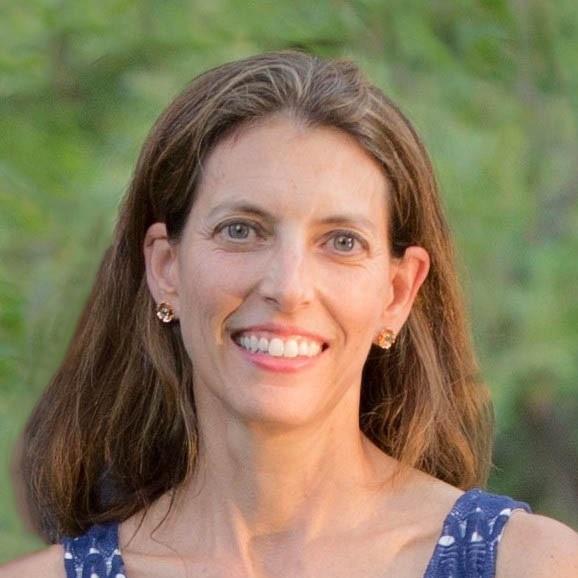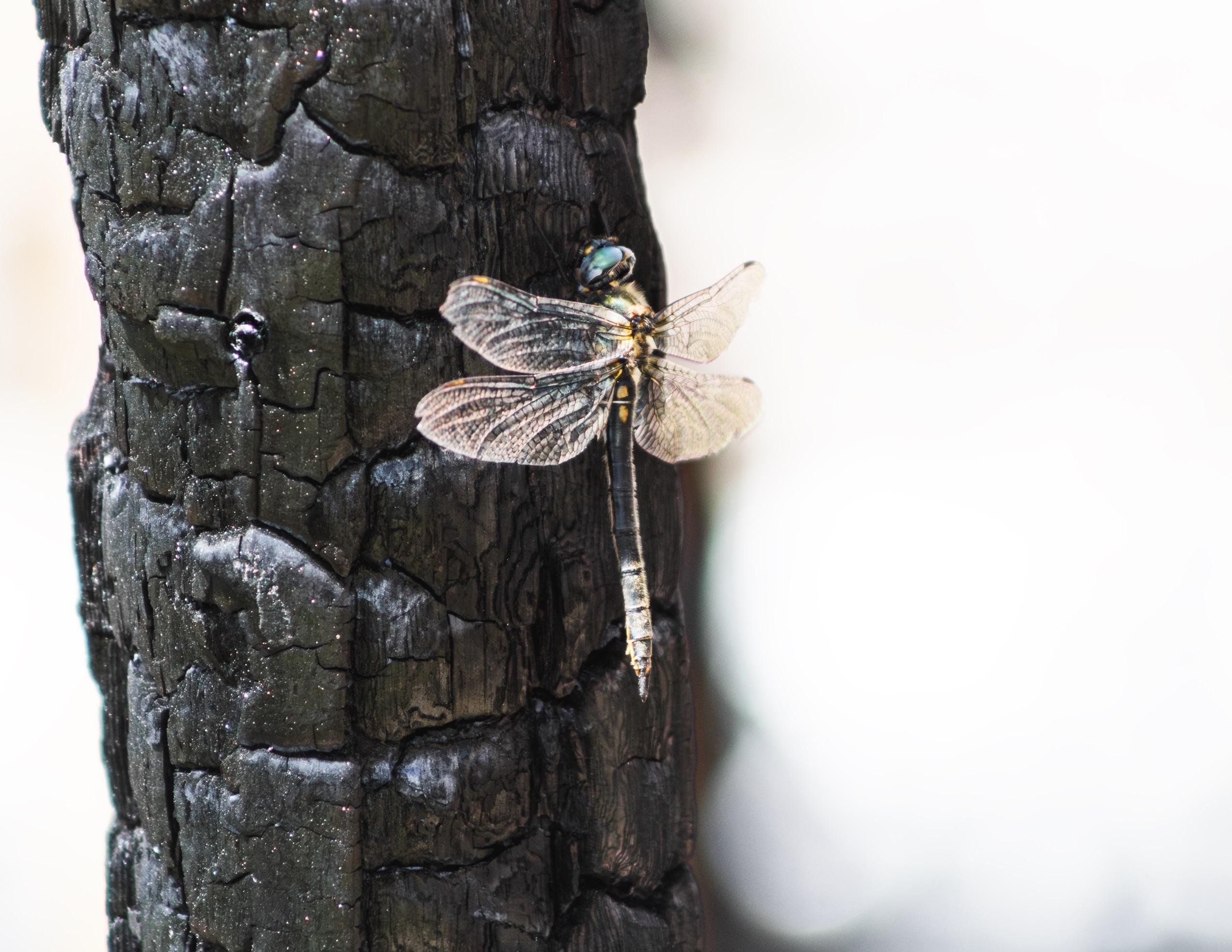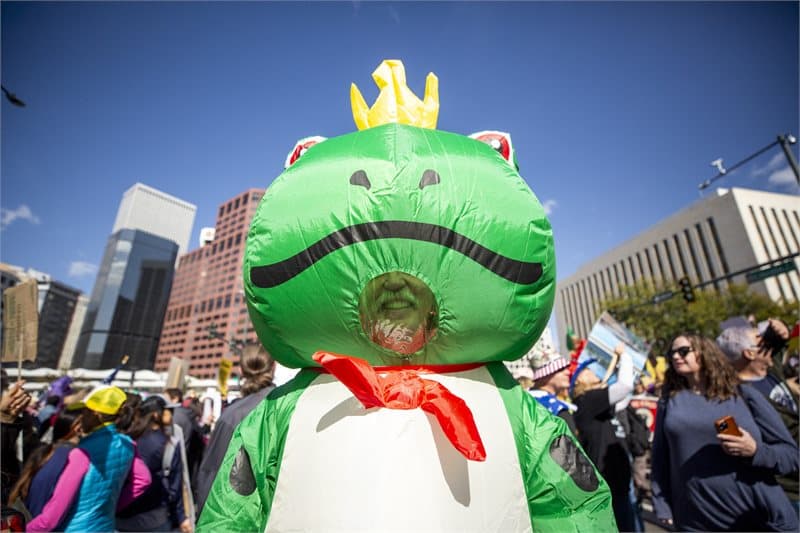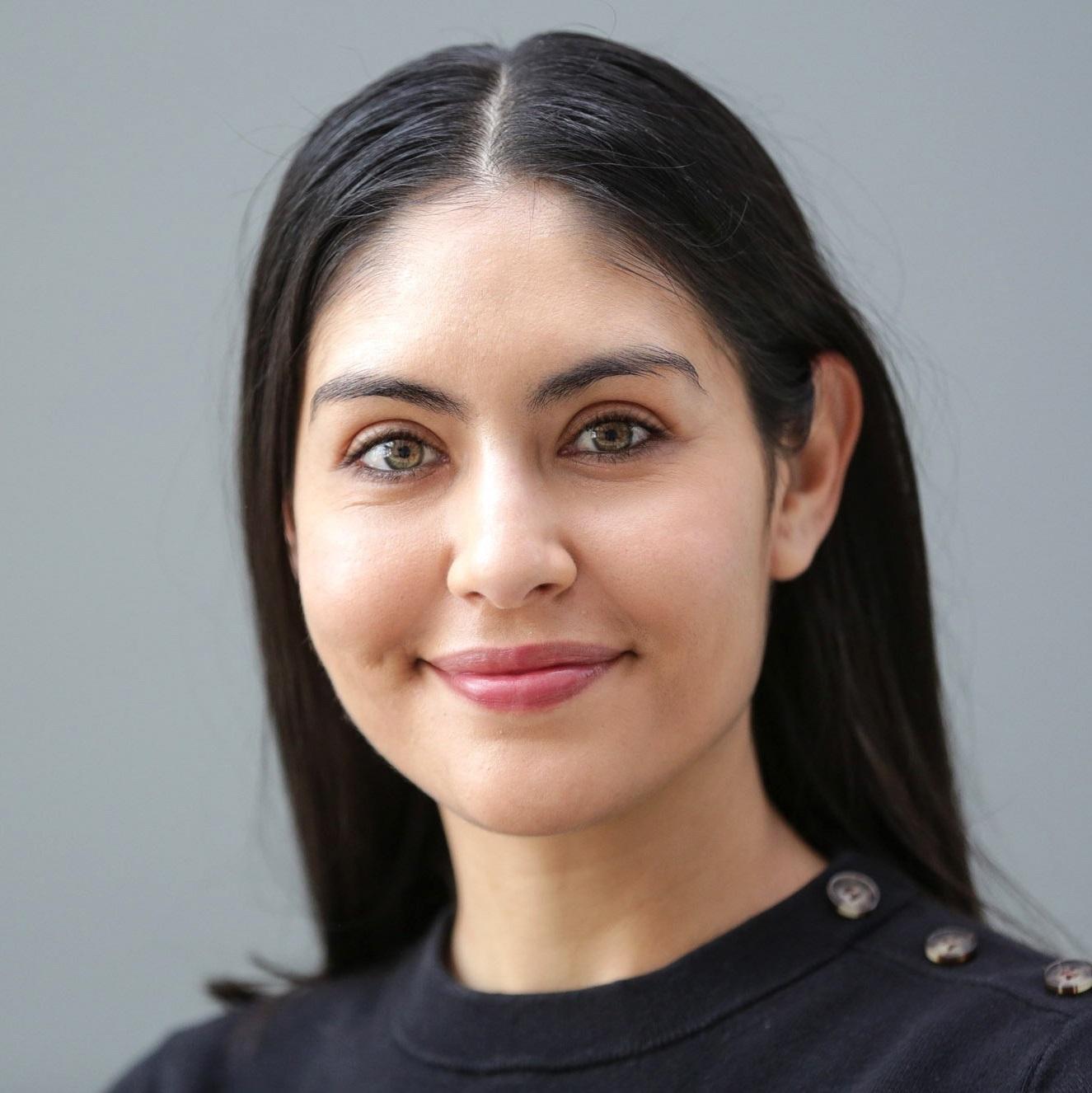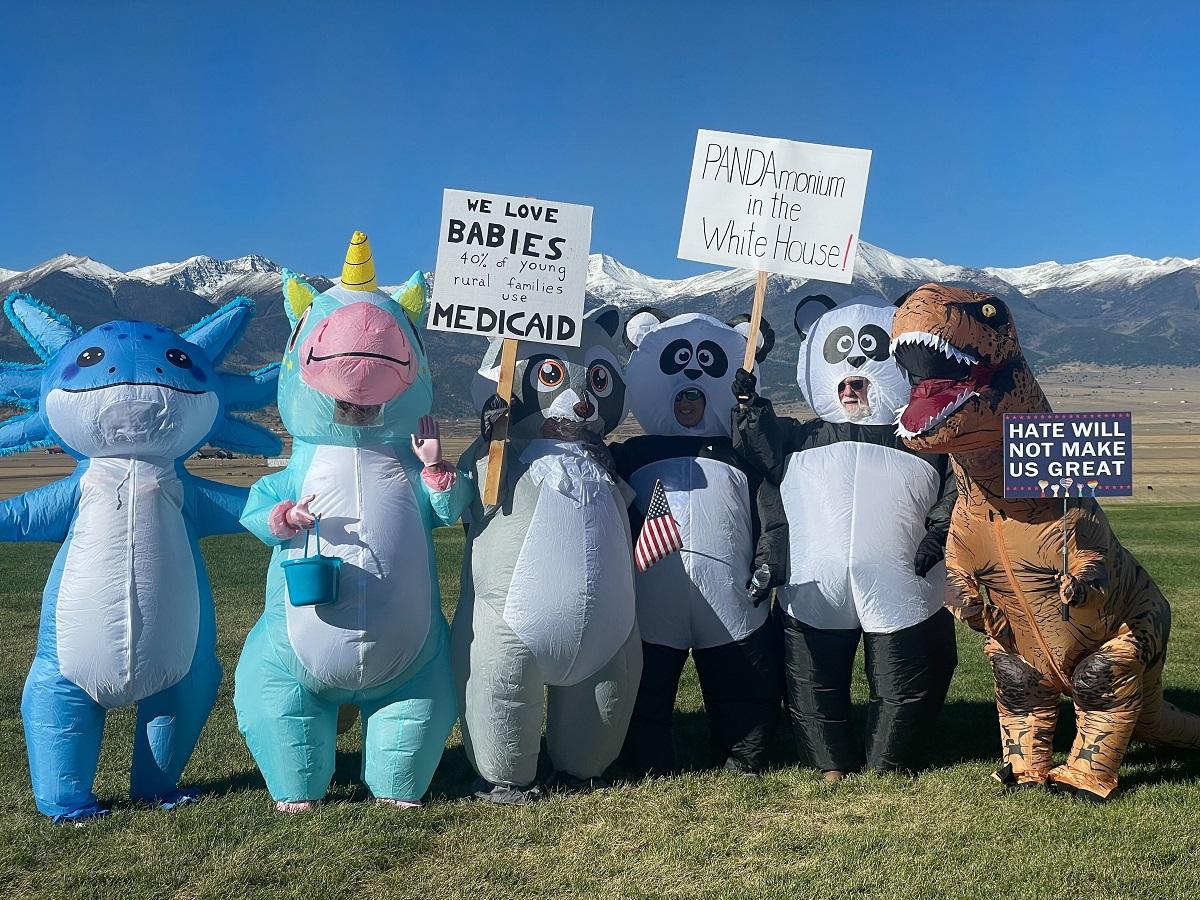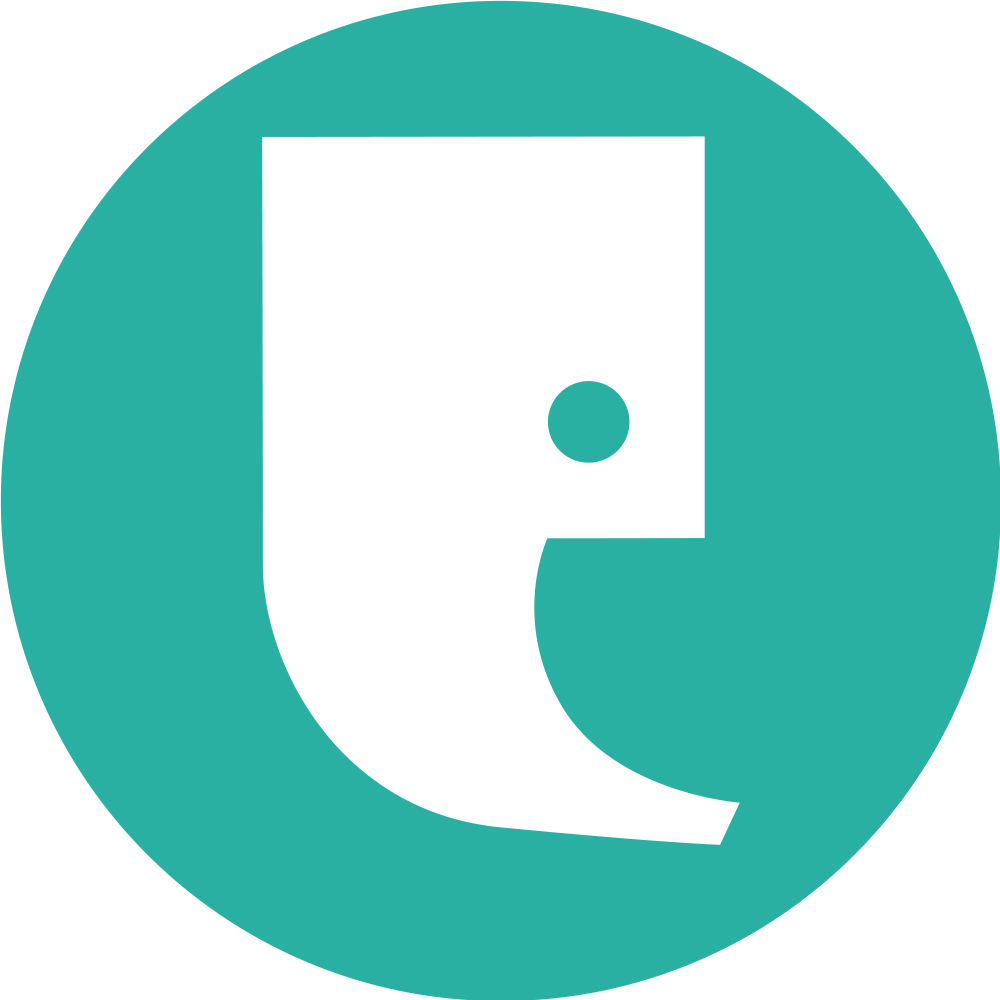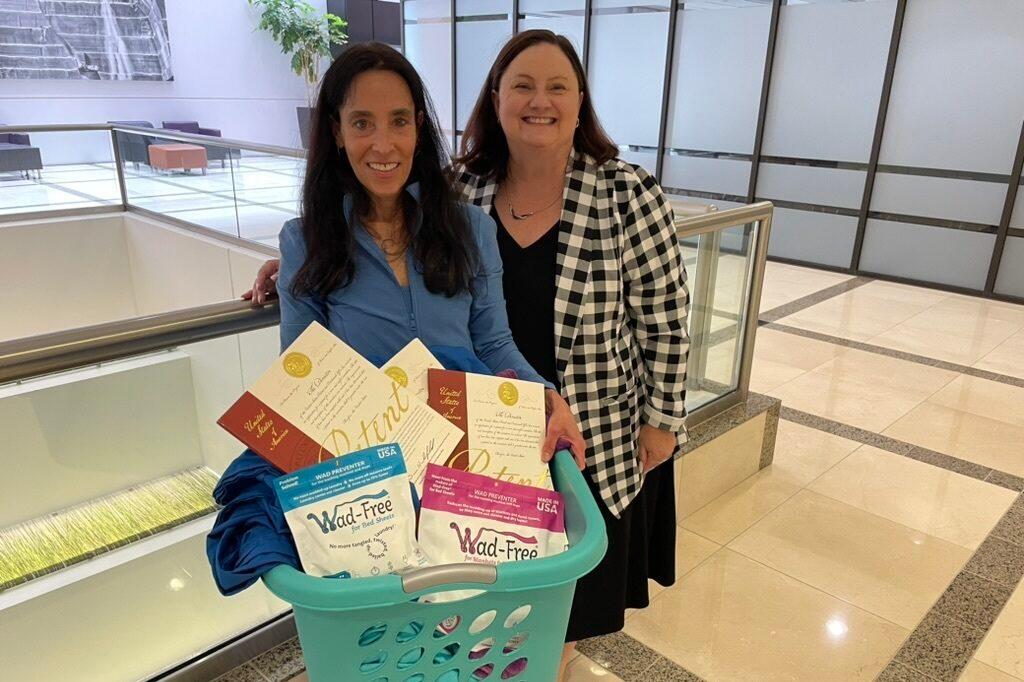
Coloradans are inventive: the state ranks in the top 10 for patents filed per capita. It’s also home to a regional US Patent and Trademark Office, one of only four outside the Washington, DC area. The office is marking its 10th anniversary in Denver, with a celebration on August 23 that’s open to the public.
What’s being patented in Colorado these days? Everything from agricultural technology to quantum computing, to inventions related to climate change, said Molly Kocialski, USPTO Rocky Mountain regional director. And while big hitters like Dish Network and the University of Colorado receive dozens of patents every year, individual inventors still make their mark.
One of those individual inventors is Cyndi Bray of Denver. She designed her gadget, the Wad-Free, to cope with a common laundry annoyance: sheets that get balled up in the washer and dryer. Bray received a $200,000 investment from Kevin O’Leary on Shark Tank and has sold “hundreds of thousands” of Wad-Frees. She credits the seminars and guidance of the Rocky Mountain USPTO for helping her to secure multiple patents, trademarks and copyrights, all of which she relies on to protect her business from copycats.
Regional director Kocialski and inventor Bray spoke with Colorado Matters host Ryan Warner about the environment for invention, patents and entrepreneurship.
This interview has been edited for length and clarity.
Ryan Warner: The United States recently issued its 12 millionth patent. How would you describe the rate of patents and invention right now?
Molly Kocialski: Accelerating, I think is the perfect word to be able to say what is going on. We've seen it over the years, right? The first patent was issued in 1790 for a potash process that was used in fertilizer, which of course was part of the agrarian economy that our country was in at the time.
Warner: This is by Samuel Hopkins. I'll note that President George Washington signed the first patent.
Kocialski: It used to be that the president signed the patents. But our first patent examiner was Thomas Jefferson. And as our country has gone from being an agrarian country to being localized in urban centers, so has the technology changed over the years. And so I think as the pace of technology changes, so does the pace of patenting.
Warner: That's interesting because I would understand the nature of patents to be changing just because technology is changing. But you are saying the pace of patents is changing as well.
Kocialski: Absolutely.
Warner: Why is that?
Kocialski: I think it is the pace of business and it's the pace of protection.
Warner: It's also true, and we'll certainly hear this a little later from our inventor, that you don't just get one patent for one thing and you're done. As a technology evolves, as it becomes more sophisticated, you get patents for the sort of improvements that come along.
Kocialski: Absolutely. That is the entire intent of the patent system. It is not meant to be a one-and-done type of thing. It really is meant to reflect the pace, the change, and all of the alterations that inventors make and all of the improvements. In fact, the word improvements is in the patent statute itself.
Warner: Patent number 12 million went to a team of California inventors for a chemical reagent for use in DNA sequencing. With that scene setter, what can you tell us about the types of technologies that are now being patented?
Kocialski: So it's all of the things that you get to hear about in the news, quantum computing, artificial intelligence, 5G, whatever is the next thing in technology. And that's where we live as patent attorneys, as patent practitioners, and as patent examiners. We all live on that edge of technology. And then sometimes on the edge of the law too, because the law has changed,
Warner: It occurs to me that another evolution is that early on what I could patent, I could probably hold in my hand, and now patents must to a greater extent be about processes or things that I can't hold in my hand. Not a widget.
Kocialski: Exactly. I mean, I think of the world of quantum computing that is going on, and since EDA just funded Elevate Quantum, I think about all the things that are going to be patented that surround quantum computing, but the process of quantum computing itself is just something that's so esoteric. It's not something you can hold in your hand.
Warner: It's hard to explain, let alone hold in your hand.
Kocialski: Trust me, I'm waiting for the Quantum Computing for Dummies book to come out so I can understand more. But no, really it has changed. I'll use an example from the Agritech world. There's a company out of Scottsbluff, Nebraska that is inventing a self-driving vehicle for a cattle feedlot. So if you talk to cattle feedlot owners, their first and foremost problem is keeping people driving those trucks. As you might imagine, it's kind of a crappy job.
Warner: I see what you did there. I smell what you did there.
Kocialski: So they have a hard time keeping people in that job, and the average tenure in that job for a person is six months. So tell me, how can you run a cattle feedlot when you've got personnel changes every six months? You can't. It's a real problem. So this company is working on using LIDAR and GPS and satellite and combining a whole bunch of different technologies to create a self-driving cattle feedlot truck.
Warner: But in a way, it's also a throwback to the fact that we still need agriculture. And those were some of the first patents.
Kocialski: Exactly.
Warner: I want to mention that indeed, Colorado has become something of a quantum hub, and that's in part thanks to the US Department of Commerce's Economic Development Administration. So, the EDA. Are there technologies that you see specific to Colorado patents and the West?
Kocialski: Yes and no. As our society becomes more amalgamated, I think there's definitely that spread across everything. The one thing that still holds true is that necessity is the mother of invention. You have a problem and you're inspired to find a way to solve it. And it's hard to say “in the West” because we have so much agribusiness and agritech that's coming out of northern Colorado, but then when you look at Southern Colorado, there's a cybersecurity center. There's quantum and everything that's going on at NIST, there's climate change that's going on at NOAA. We have a huge space industry with Buckley Space Force. That's just going to increase.
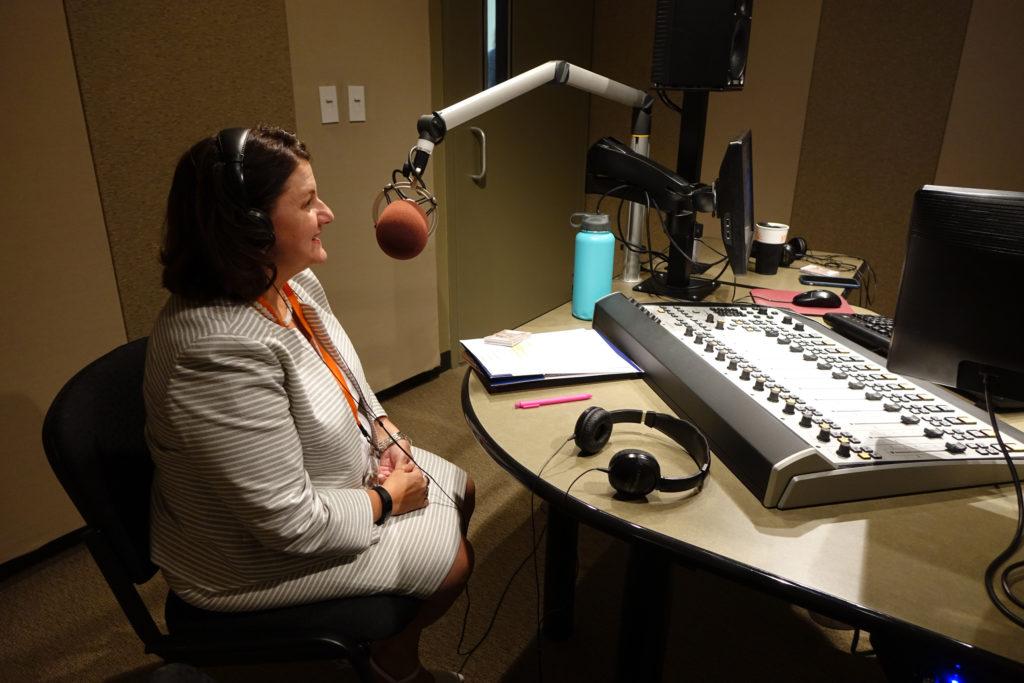
Warner: This is really important to understand. So you mentioned NIST, which is the National Institutes of Standards and Technology in Boulder. We might picture individual tinkerers, but the fact is government labs, big corporations and universities dominate the list of patent recipients in Colorado. Some of them are awarded dozens of patents every year, and yet we have the individuals. And I feel like this is a good time to bring one in. This is an invention and an inventor. The invention is Wad-Free, which is a tool that makes laundry easier. The inventor is Cyndi Bray of Denver. Hi Cyndi.
Cyndi Bray: Hello.
Warner: I have to say I'm quite grateful for you because I have had too many instances of washing and then trying to dry a duvet cover or sheets and then having one of my no-show socks get stuck in the wad and remain damp. And then I'm thinking, do I have to run this again? This is what you have tried to solve with Wad-Free.
Bray: Correct. We have all been there. We wash our sheets, we dry our sheets, they twist, they tangle, they ball up no matter what you do. So yes, I invented the solution and Wad-Free solves everyone's laundry pet peeve.
Warner: The basic idea is that you've created a device that you put the four corners of a sheet into, and this prevents the wadding that leaves some laundry dry and some damp. Do I have that right?
Bray: Absolutely. So I now have two inventions. One is for bedsheets and one's for blankets and duvet covers, but they both work in a similar way. You attach portions of the fabric to their own Wad-Free, and then you put it in the washing machine. It stops them from coiling up, twisting and tangling, sometimes sending that washer off balance. So the sheets are going to come out cleaner. And then you transfer it to the dryer where the sheets stay separate and they dry up to 75 percent faster.
Warner: Oh, so this is an energy savings as well?
Bray: Oh yes. You save so much time, money, and a whole lot of energy with Wad-Free.
Warner: If necessity is indeed the mother of invention, well, it helps that you're a mother of children whose laundry needed to get done. Tell me about the need that led to this in your own family.
Bray: Well, I think I speak for most laundry doers in that I was fed up with the way my sheets would wad up every time I did laundry. My biggest problem was in the dryer. And no matter what I did, they would just ball up. And, I'll tell you what, one too many times I came back to the dryer as it was approaching bedtime, intending to put those sheets back on the bed, and they were not dry, of course, they were in a wet wad. I had to unravel them, dry them again, keep my kids up past their bedtime. Not my finest parenting moments. They've since forgiven me. But I was determined to solve this problem once and for all.
Warner: And over the years you have perfected this device. You've adapted this device, and at each iteration, you need a patent, you sought a patent.
Bray: Well, actually that's not true. The product is exactly as I invented it when I first launched, but I have accumulated now 11 issued patents on my product
Warner: For the original design?
Bray: Yes.
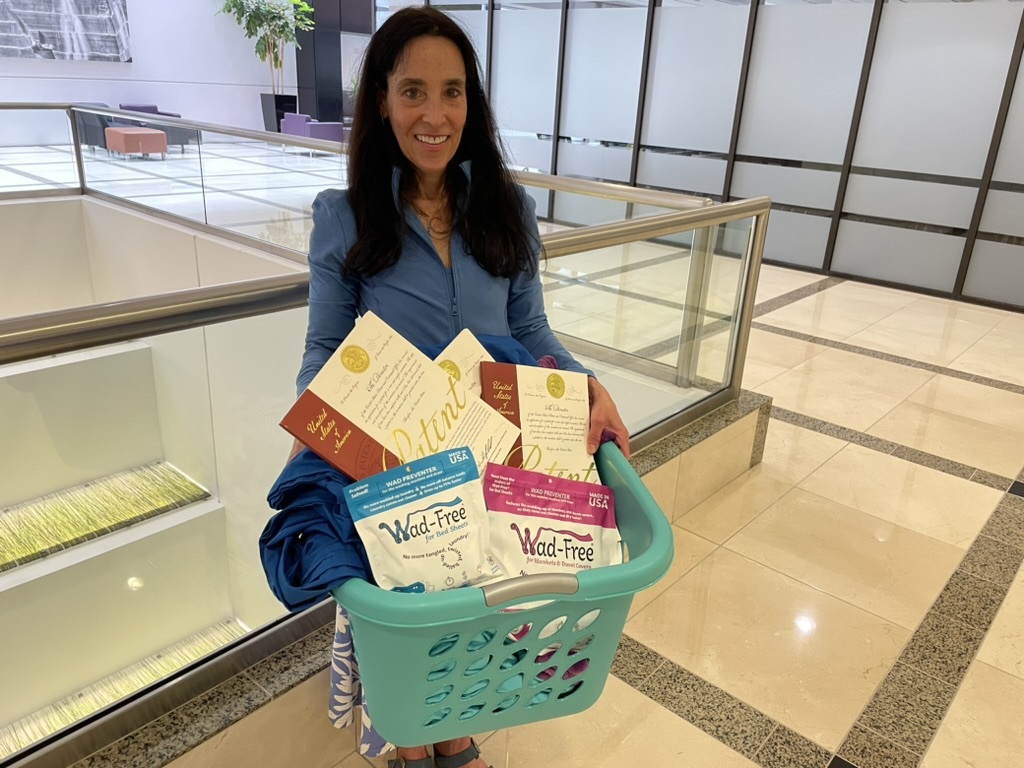
Warner: Well, that's fascinating. That is to say, you had a better understanding of your original design and its uniqueness, such that you have learned over time, then, to seek more patents.
Bray: Yes. So my product actually was the first product ever anywhere that solves this problem so many people have in both the washing machine and the dryer. So it created a brand new product category. So my original patent was issued in record time, 15 months. It was a novel idea, a novel product. It sailed right through. Each additional patent I've received since broadens my coverage, makes my shield, my intellectual wall, all that much stronger.
Warner: Okay. Give me an example of a later patent.
Bray: So the original patent was very specific about each feature. Every time we get a new patent, it broadens it to make my protection a little bit stronger so that if a competitor comes on the market, I can take them down with my patent.
Warner: You say competitor and I hear the word inherently, copycat.
Bray: Correct.
Warner: Have you had that experience, of having to kind of tamp down copycats?
Bray: Oh yes. There have been literally thousands of takedowns throughout the world.
Warner: I'm assuming that when you say “takedown,” it's from sites like Amazon, for instance.
Bray: Correct.
Warner: Do you police that?
Bray: I sure do. I protect my patents. My business depends on it. And Amazon has been a fantastic partner in taking down the counterfeits from their site. But it's not just Amazon, it's eBay. They're coming out of China, Alibaba, Ali Express, and my patents are effective.
Warner: Molly, this is fascinating. I mean, this is really where the rubber meets the road on patents. Without that protection, it's much harder to do those takedowns.
Kocialski: Absolutely. The intellectual property provides you with the arrows to be able to convince companies like e-commerce sites to be able to take down any copycats or counterfeiters. I always like to say that Shakespeare said that imitation was the sincerest form of flattery. Actually, in my world, it's not. It's infringement.
Warner: Right. And it's affecting people's bottom lines.
Kocialski: Absolutely. And it is the responsibility of every intellectual property owner to police their own intellectual property. So they get the rights to police from the US Patent and Trademark Office, but then they go and they police it themselves.
Warner: Cyndi said that her first patent was record speed, or just very quick, but that was still more than a year. What's happening in that year period to verify that this is something new, different, etc.?
Kocialski: So the statutory requirements are, there's four of them actually. So it has to be patentable subject matter. Cyndi's device, you can hold it in your hand and it's useful. So that meets that requirement.
Warner: Well wait, what would be unpatentable?
Kocialski: An algorithm for example. So like Einstein's e=mc2. You can't get a patent on that. You can get a patent on the results of applying e=mc2 to something, but you can't get a patent …
Warner: on the equation.
Kocialski: Correct.
Warner: Okay. Run through the other three now.
Kocialski: So then, it has to be new. No one person can have done it before you. It has to be non-obvious, which means given pretty much the state of technology, does this advance technology in some way? How is this unique? And then the fourth one is that it has to be clearly described so that somebody else can make or use your invention once the patent expires. And so when an application comes in, it gets put in a queue. We receive about a little over 630,000 applications every single year. We issue about 300,000 patents every single year.
Warner: Fewer than half of applications.
Kocialski: Right. Except that, that's not a one-to-one ratio because it does take longer to get through the patent process. Our typical timeframe, we want to have a first office action to an inventor within 14 months. That's been a little bit of a stretch goal lately. We're a little bit closer to 16 months overall, and then no more than four months of response between the inventor and the patent examiner, and no more than 36 months to what we call final disposition of a patent, which is abandonment or issuance. So it does take time, but the point is, it has to be deliberative. You're getting a monopoly.

Warner: You're getting a monopoly. That's what a patent is, is a mini monopoly. Cyndi Bray of Denver, inventor of Wad-Free, I know that you went on Shark Tank in 2021. You got an investment from Kevin O'Leary. Did you have the patent by the time you went on Shark Tank?
Bray: My patent was issued one week after I taped. Very fortunate for me, it had been issued by the time it aired in November.
Warner: And when you were being quizzed – and obviously some stuff hits the cutting room floor – was its patentability at all part of your persuasion of the investors?
Bray: I was asked if I had a patent and my answer was clear. But it's not just a patent. I also have trademark and copyrights, which are equally as important in taking down the counterfeits.
Warner: And so this really is part of the financial picture and the investment picture as well. How many Wad-Frees have you sold?
Bray: Wad-Free graces the laundry rooms of hundreds of thousands of Americans, and it's also shipping across around the world.
Warner: What have you learned about yourself doing this?
Bray: My dad raised me to believe that I could do anything I set my mind to. I did not have a background in engineering or manufacturing, e-commerce, none of this. But I taught myself everything in order to be able to design and launch and manufacture and sell wad free all by myself.
Kocialski: But I will say that Cyndi embodies what we always tell people: You ask for help, you figure out where you can get the help, and you make sure that you're getting the help.
Warner: Is that something the patent office has in its mission?
Kocialski: Yes absolutely.
Warner: So you see yourself as a partner to the inventor?
Kocialski: Absolutely. We really want to walk the intellectual property journey with inventors, with business owners, and we want to meet them on their journey where they are.
Warner: Okay. I'm just going to harken back to a childhood experience of mine. There was a program called Invent America. And I invented a board game for people who are blind, and it was a tactile board game. So as you advanced, and as you spun an arrow, everything had texture to it. Maybe it was a sandpaper texture or a sponge texture. If there is a kid out there today, or a grown kid out there today with an idea, they don't know if they're the first to have it or not. What is the first step that they should take? I'm going to have you answer that from the patent office perspective first.
Kocialski: My recommendation before you embark on the patenting process is that you do a search. A patent ‘prior art’ search to determine whether or not somebody else has done it before you.
Warner: So you have a searchable website of everything that's been patented.
Kocialski: Absolutely. It's everything that has been patented - though, and as you just said, we're on patent number 12 million. That's a lot of things to look through. You're not going to look through them one by one. So we have patent and trademark resource centers in a lot of cities around the nation. There's one right here at the Denver Public Library. They will help you design a search. They won't do it for you, but they'll help you design a search. You can also come to our offices. We'll help you design a search that will help uncover and give you a clearer picture of whether or not you should proceed. And then once you make the decision to proceed, we have lots of help for people who may be under-resourced or just can't afford a patent attorney.
Warner: I was going to say there's a lot about what we have heard, I think from Cyndi about how you have to dedicate yourself to this. That would not be true for people who are juggling maybe multiple jobs or who don't have economic resources.
Kocialski: Absolutely. And I always like to say, anybody can be an inventor. You just have to have the idea and you have to have the passion to pursue it. But there is so much help along the way. And you can reach out to our offices, we'll put you in touch with things, but we have law school clinics here in Colorado and around the nation. We have our ProBoPat program that's run by the Mi Casa Resource Center. It pairs inventors with patent attorneys who will write the applications for free. We also offer a series called Path to a Patent that teaches people how to represent themselves before the agency and basically walks them through the entire process of preparing the application to filing.
Warner: How would you answer this question in terms of where to start, Cindy, if you have an idea you think is novel?
Bray: I wish I had known about your search services because I did perform all of my own searches through your website on my own, days and days and days of searching through all of these patents. I did use a lot of the resources on the USPTO website, which are phenomenal. There are videos, there are tutorials, you have webinars, so many courses to put you on the right path. And like you said, I did use the pro bono patent attorney, but before I went to him, I had filed my own provisional patent. Two of them, actually,
Warner: I'm just looking at your patent here, or one of them, which is #11,649,582. And this patent is a book. It's a paperback book essentially that lays out all of the attributes of your device. There are a lot of graphics of it, a lot of illustrations of it, and essentially graphic explanations of how it works and why it's unique. I do want to ask about the disappointment that this road can lead to, which is you think you have an idea that is new, novel, exclusive, unique, and it's not. That must happen.
Kocialski: It does. And from my days as a patent attorney, having that conversation with an inventor were some of the hardest days of my life. It broke your heart every single time because it is a paperback book, but it is the embodiment of somebody's hopes and their dreams and their intention and their ideas and their time and their energy.
Warner: And maybe what they want to provide for their children. Or leave for their family.
Kocialski: Exactly. I've never met a single inventor who treated any of their patents, and I've met inventors who have hundreds of them. They can tell you each and every single one of them, they can almost recall them from memory. They are their children, they are their babies. And telling someone that their baby is ugly is awful. No one wants to do that. And so those were the hardest days. But there are, for every product that's on the market, there's probably patents that are out there that didn't make it to the marketplace. So I think it really behooves you to do that search to know before you invest.
Warner: If I have an idea that is not new, but that is not currently in production – in other words, I could imagine a device from 1812 that has gone out of fashion but might find some new modern use, just because I don't have a patent for it or it's already been patented and that's perhaps expired doesn't mean there is a future for manufacturing said thing.
Kocialski: Correct. But the modern use, depending on what you combined it with or if it's a new use, a new use of an old invention is patentable.
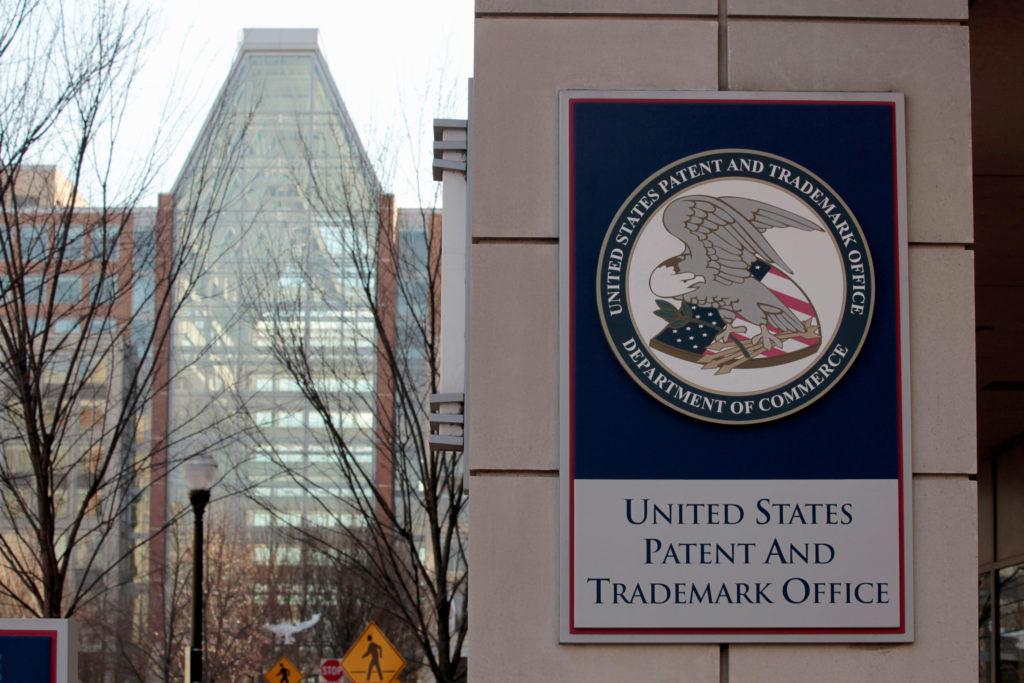
Warner: Whoa. Before we go, are there any scams to look out for?
Kocialski: Oh, many.
Warner: Because I feel like I have seen those commercials - it's probably been some number of years - but those commercials that say, “We'll help you bring your product to market.” And having heard both of you, it makes me think that there are unnecessary middlemen that probably profit off of this.
Kocialski: So, you can represent yourself in front of the US Patent and Trademark Office. If there is a law firm or an advertisement, but they refuse to give you the name of an actual person or you don't actually meet a person, that's a red flag. Do your due diligence on attorneys. All patent attorneys are scientists or engineers first. We are extraordinarily proud of the fact that we doubled down and went to law school after that. But we will tell you on our websites who we are, what our background is, find somebody who matches that and then do your due diligence on them. The US Patent and Trademark Office publishes a list of all of the attorneys that are registered to practice before the office. Cross-reference that.
Warner: That's a good first check.
Kocialski: That's a great first check. And then cross-reference that with the state where the attorney is located so that you can see if they've been disciplined or something like that. The other thing that happens is once you register and your patent gets published or your trademark gets published, you will start receiving a whole bunch of mail.
Warner: Oh, the buzzards start to circle.
Kocialski: Oh yes. And none of it is from us. So they will say things like Patent and Trademark Bureau or Trademark Renewal Service or something like that. And they will claim that you owe the US Patent and Trademark Office money. We don't tell you that you owe us money ever. If you get something that says you owe the patent and trademark office money, that's not us.
Bray: They look official.
Kocialski: They look great, they look official.
Warner: This is like when you form an LLC and you start to hear from every credit card company and every side business.
Kocialski: Absolutely.
Warner: Okay. Before we go, I'd like to know, Cyndi, if you have more inventions in you.
Bray: I do, but they're patent pending. So mum’s the word.
Warner: You're not going to even give me a hint.
Bray: No. Another laundry game changer. How's that?
Warner: So this will also be in the laundry room, your new invention. And I imagine you intend to make it in Colorado as you do Wad-Free.
Bray: Oh, absolutely.
Warner: Thanks to both of you for being with us.
